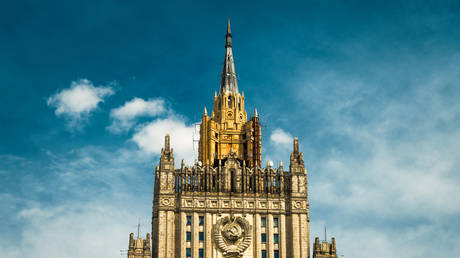
Living history! - Explore the ancient Syrian archaeological site of Shinshirah
"The ancient Syrian village of Shinshirah, an archaeological site and current settlement with ruins dating back to the Byzantine and Roman eras, was seen on the eastern slopes of Jabal al-Zawiya in Syria’s northern Idlib countryside. Known as the 'City of Joy' or 'Neighbour of the Moon', footage shows the spectacular ruins, as well as some evidence of destruction in the recent civil war in the country. "Shinshirah was built between the 1st and 7th centuries AD. It contains Byzantine-Roman cities that span both historical periods," explained Mustafa Al-Yahya, archaeological Researcher. "They include a number of churches, the most notable being the Northern Church, which was built over the ruins of a Jewish temple. The structure is distinguished by a watchtower on the southeastern side, originally three stories high — now only two remain due to partial collapse." He added that the village "once consisted of more than 800 homes. Today, only about 150 remain due to invasions, wars, and destruction. During the recent conflict in Syria, some of these buildings were used by locals as shelters". "Foreign delegations used to visit from Europe and other regions. There were no roads leading here - the paths were rough, and they would ride donkeys or mules, especially when there were women in the group. and I remember a tourist who stood in front of one palace and began to cry, saying, 'This is where our ancestors lived'," added local resident Ahmad Al-Ikhtiyar. He also said that the site was not merely a collection of ruins, but rather "a vital retreat for the local community" - especially in spring, when families and friends would gather for outings and engage in social and cultural activities. The village also saw vandalism and destruction during the latest civil conflict, with clashes and illegal excavation activities, according to local sources. Shinshirah is located within the Serjilla archaeological zone. The village features distinctive Byzantine Christian inscriptions and decorations — most notably the Greek cross, and vine branches and leaves. The site includes six churches, one of which dates back to the 6th century AD and was originally a Roman temple. It also contains a small medieval mosque, burial sites, stone sarcophagi, and an olive press dating to the year 372 AD. Syria is home to six UNESCO World Heritage Sites, including Old Damascus, Old Aleppo, Bosra, Krak des Chevaliers, the site of Palmyra, and the ancient villages of northwestern Syria - among them Shinshirah, which was added to the List of World Heritage in Danger in March 2011."













